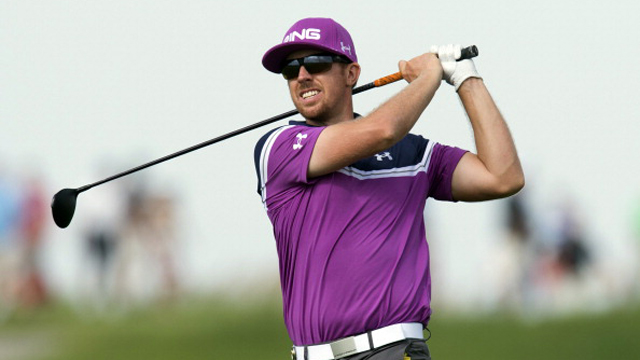NEWS
Eubanks: In Praise of Match Play

This week reminds us of what the game looked like for centuries.
From its inception in the 1400s until the creation of the British Open Championship in 1860, golf was a match-play sport pitting one player against another in a test of strategy and skill. Being able to look your opponent in the eye and react to what you saw was as critical to the game as showing up with clubs and balls.
In fact, par wasn’t invented until the late 19th century. Until then, finishing a hole in three, four or five strokes was irrelevant as long as you played better than the guy you were trying to beat.
This week, the PGA Tour reminds us how much fun match play can be as 64 of the best golfers on the planet tee off in Arizona in the WGC-Accenture Match Play Championship, a head-to-head format that turns early-week golf into must-see TV. What other event rivets viewers on a Thursday? Where else in our game can you see Cinderella upsets that rival NCAA March Madness?
Unfortunately, the answer is: Nowhere.
But that wasn’t always the case. For 40 years, the PGA Championship was professional golf’s only match-play major, a tournament that took the best elements of the U.S. and British Amateur championships and applied them to the professional game.
The few still around who remember those days speak glowingly of seeing Jackie Burke beat Ted Kroll 3&2 in the finals of the 1956 PGA Championship in Canton, Mass. And anyone who saw Byron Nelson beat Sam Snead 1 up at Hershey Country Club in 1940 had to know they were witnessing history.
The argument against match play has always been that you could get a snoozer for a final. What happens, for example, if all the “big names” get upset early in the week and you're left with a match no one cares to watch?
That, of course, is possible, but history shows it to be rare. Snead played in four PGA Championship match-play finals. Byron Nelson played in five. Ben Hogan only made it to the match-play finals of the PGA twice, but he won handily both times, beating Porky Oliver 6&4 in 1946 and Mike Turnesa 7&6 in 1948.
Imagine the drama of Henry Picard beating Nelson in 37 holes in 1939, or what it must have felt like to watch two years later as Vic Ghezzi denied Nelson again, this time taking Lord Byron to 38 holes before closing out the match.
Going back even further, Paul Runyan beat Craig Wood in 38 holes. Wood had won the Open Championship in 1933 and would go on to win the Masters and U.S. Open in 1941, but he never made it another final of the PGA Championship, which only adds to the allure the old match-play format provided.
Tommy Armour beat Gene Sarazen 1-up in 1930 in a match that must have been a treat for all who saw it. And in 1920 future Hall of Famer Jock Hutchison beat J. Douglas Edgar 1 up at Flossmore Country Club in Illinois after Edgar’s putter failed him on the penultimate hole. Tragically, Edgar was murdered in Atlanta a year later, stabbed to death on West Peachtree Street in a crime that remains officially unsolved almost a century later, while Hutchison won the inaugural PGA Seniors Championship at Augusta National in 1937 and was the honorary starter of the Masters Tournament until 1973.
In last year’s Accenture Match Play Championship, Rory McIlroy lost to Hunter Mahan in a match most considered an upset. Even so, no one who watched it could turn away.
That is the beauty of match play. It draws you in like a well-crafted drama with stories that ebb and flow and arc from the first shot until the last.
This is a week to appreciate the format; a week to remember its history and to recall the great champions who won major titles through match play.
And it is a week to reflect on what our game has become, and what has been lost when only one week a year we have a “novelty” event decided through matches.